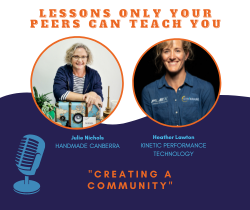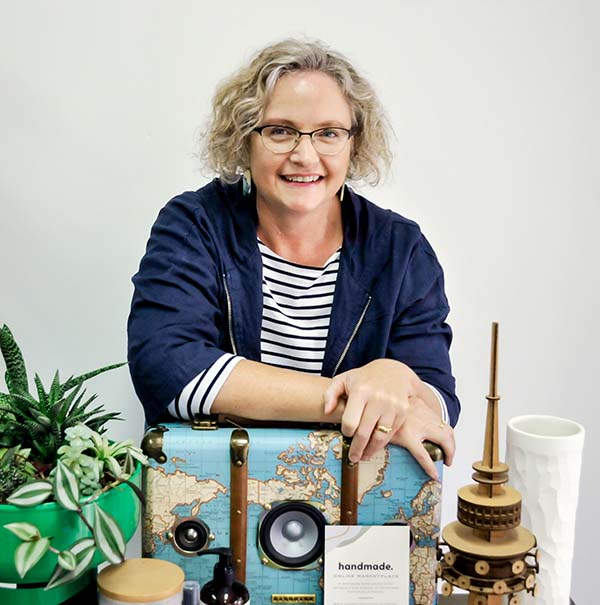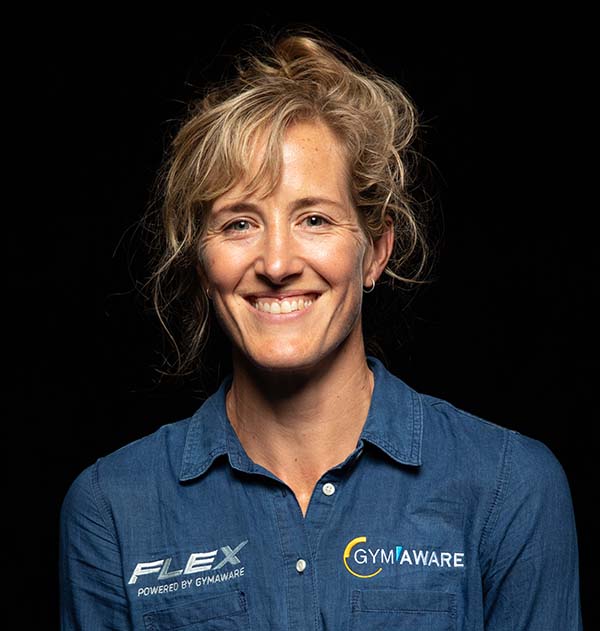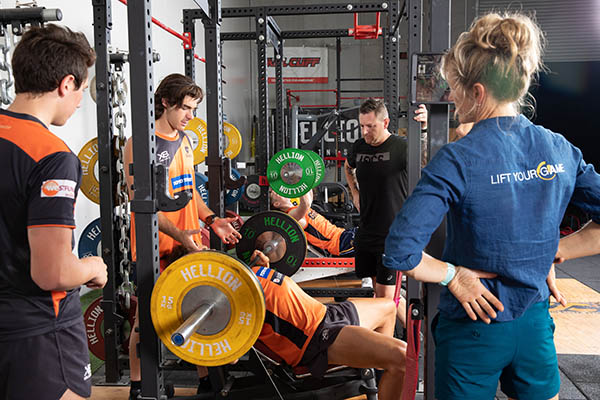 We spoke to Julie Nichols from Handmade Canberra and Heather Lawton from Kinetic Performance Technology (GymAware) to get their views on the role community has played in growing their businesses. Harnessing the power of community in your marketing can bring numerous benefits to your brand. Here are five compelling reasons why you should consider integrating community-driven strategies into your marketing efforts:
We spoke to Julie Nichols from Handmade Canberra and Heather Lawton from Kinetic Performance Technology (GymAware) to get their views on the role community has played in growing their businesses. Harnessing the power of community in your marketing can bring numerous benefits to your brand. Here are five compelling reasons why you should consider integrating community-driven strategies into your marketing efforts:
1. A strong emotional connection and shared vision create loyal customers.
People are more likely to engage with brands that resonate with their values. Shared experiences, values, and stories can deepen the emotional connection your customers have with your brand and turn them from customers to advocates.
The Handmade Markets are now in their 15th year, started by Julie Nichols with the idea that Canberra could use a market that was for people who created their own product. Julie was a milliner by trade, studying while she was in the Airforce. She realised that markets in Canberra could be a little bit more than what they were at the time. So, she created something specifically for people who made a handmade product or had their own creative business.
“I went and found a location. Albert Hall could fit 35 stalls, and I convinced 35 stallholders to come along to the market. We had about 2000 people come on that first day, which was fantastic and made for a very crowded Albert Hall. We considered that a success and went from there.
“We've had a few venues along the way. And I've always considered slow and steady growth as the way to go for us. We're now at Exhibition Park in Canberra four times a year. We have 250 stallholders at any one market, but we have 650 registered makers, designers and producers who are Handmade members. This makes us one of the largest registrations of small businesses where everything is Australian made. Our most recent market at Exhibition Park had around 27,000 people come through the doors”, says Julie.
Handmade Canberra is so much more than just a market. A lot of care and attention has gone into building a strong, vibrant and supportive community. Julie says that it's the most important thing that they do and that without that, she doubts that they would have lasted for 15 years.
“COVID, price hikes, and interest rate rises have a major impact on small business. They impact people, they impact communities, and they impact people who have businesses and the people who shop with them. But if you've built a strong sense of community, shoppers are happy to support your business.
“Community is everything and I think, as a small business or even a large business, it's something that you should always be thinking about. In fact, you should probably be thinking about that first and everything else second,” says Julie.
 2. Your community can provide valuable insights and feedback.
2. Your community can provide valuable insights and feedback.
Heather Lawton is one of the directors of Kinetic Performance Technology, or as they are more commonly known, for their popular product, GymAware.
Heather says it was actually their community that dictated what their company's name was in the end.
“It was really apparent in the first couple of years when we were exporting that everyone just referred to us by our product name. Our product measures the speed of the barbell in a weights room. Our customers range from the elite sportsperson all the way down to someone working out in their garage gym. We've been around for over 20 years now and we've been exporting for more than 10 years,” says Heather.
Heather says their community is their customers, but it’s greater than that.
“I think when you're considering community, you also need to look at your competitors. So, for us, our definition of community is more about the space that we play in and who hangs out there.
“When you start listening to your community, it really helps inform some of the choices you make as to what you do with your product. For us, rather than creating a product and pushing it on a market, we considered who was in the space that we were interested in, and then listen to their problems, and then tweaked and refined our product around that before taking that big step and entering the market overseas.
“Community has definitely also changed. For us, now when we talk about community, we're thinking about our social media presence, whereas five years ago, our community was much more physical. Pre-COVID, it was on the floor at trade shows, product in hand, and then even stepping back another five from that, I think it was much more centered around researchers, so universities and people in the field researching strength and conditioning.
“Whatever definition of community you choose to use, it really helps grow those strong relationships. And it can create that real genuine brand advocacy, which then enhances your reputation.
“It's also a two-way street. You're always getting feedback from your community, which then gives you insights, and then you refine your product. Then you put it back into the community. It grows and changes along the way. The sticky part of the community is having that feedback between you and the customer,” says Heather.
3. Community demands authenticity.
 People want to connect with the human behind the product.
People want to connect with the human behind the product.
Julie says the stallholders are their customers and the people who shop with them are also their customers, so they must ensure that they are listening to both groups.
"It's so much easier these days than it was 15 years ago. We've got a closed Facebook group for the stallholders and there have been engaging discussions on there in the last few days about what works and what doesn't work, but it's just listening. And then, like Heather said, actively getting back to these people,” says Julie.
Heather adds, “We live in these really isolated silos when we're businesses, and people just want to feel that actually there's a human behind the product or behind the Instagram material. I think it does a lot to show that you're committed to your brand. and you’re passionate about what you do. You've got time for your customers and you're not just there to make money”.
4. Community can provide the inspiration for innovation
Heather gives an example of how listening to your customer can provide the impetus for product innovation.
"There's a particular kind of training where you perform so many reps of the exercise with a bit of a time gap. Listening to and talking to our customers, we designed a series of sophisticated timers that we built into the app. While it was always a feature we considered, what the customers did was that they elevated the priority of that feature higher than other features”.
Heather points out, “Businesses are always coming up with ideas for product features and prioritising them often according to their own criteria. However, we should rather be asking ‘what is the market really hanging for right now?’ and that is what you should be focusing on”.
She stresses the importance of listening to the customer, but not the outlier or the squeaky wheel that demands the most attention. Heather says the people to listen to are your loyal customers that are regular users.
"They might be super silent, but it's those people that when you engage with them, they've got some ideas and they're the ones to listen to”.
5. Measuring engagement can help you identify impact.
 Both Julie and Heather carefully monitor engagement metrics to help assess the relevance of the content that they post to their community. Heather also points to the importance of then tying that back to business metrics and your bottom line.
Both Julie and Heather carefully monitor engagement metrics to help assess the relevance of the content that they post to their community. Heather also points to the importance of then tying that back to business metrics and your bottom line.
“We do track social media metrics, which is really interesting, because who doesn't love to see organic growth across their community? The trick is to tie that into the bottom line to see how many sales you are actually making,” says Heather.
“I sometimes will do things like a Q&A with a successful coach in America and then we'll see if there's a spike in sales and engagement online. So, rather than guessing, I try to look at a specific event. I am always really interested in the spikes and troughs as they're the things that can sometimes teach you the most.”
Julie says that while they don't actually have a product to sell, they are also always looking at analytics from various sources.
“How does our online advertising go? Our clicks or interest in our Facebook event? How many people turn up to the market?” says Julie.
“This is going to sound basic, but are people happy? Are people liking what we do? If we have 27,000 customers that came to a market, is there any negative feedback? While you should never take your eyes off the stats, most importantly are our stallholders happy and making great sales? If everybody's happy and we're getting great engagement, then generally we're going in the right direction”.
To hear more of the interview with Julie and Heather, visit:
